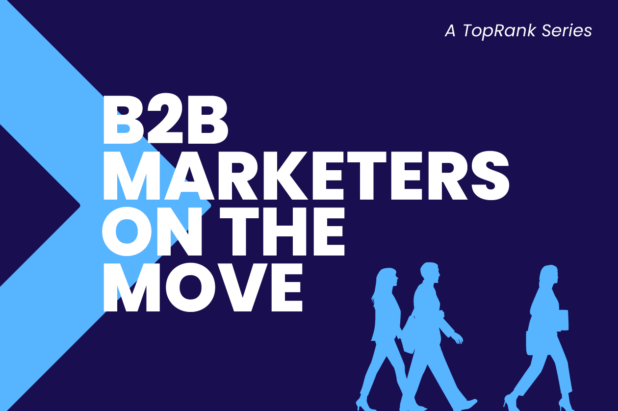 Katie Delahaye Paine is a renowned expert on public relations and social media measurement. She runs an award winning PR Measurement consultancy KDPaine & Partners, blogs, Tweets, speaks at numerous conferences and writes both a newsletter and contributes a column to PR News and other PR industry publications.
Katie Delahaye Paine is a renowned expert on public relations and social media measurement. She runs an award winning PR Measurement consultancy KDPaine & Partners, blogs, Tweets, speaks at numerous conferences and writes both a newsletter and contributes a column to PR News and other PR industry publications.
Measurement is inherently core to many forms of digital marketing but has been a bit more challenging in the PR and social media space. Katie is a measurement pioneer who has demystified and provided much needed innovation to the world of measuring public relations and the social web.
This interview with Katie covers quality vs quantity measurement, building a business case for measurement investment in a down economy and she also answers a few questions posed by @leeodden followers on Twitter.
You are the Queen, Diva and Goddess of PR measurement. How did you get there?
Practice, practice, practice J and of course all the little people, the mini-gods, princes, and knights that make what I do possible J Seriously, I was an asian studies major, trying to work in corp. com in silicon valley and had no credibility, so I started looking around for data. I knew how to use excel and make pretty charts and graphs, and I found that it worked. After that its just been a question of staying on top of the market and the way I do that is to steal a phrase – I follow the money. Wherever marketers are spending money, measurement will follow.
At SXSW we talked briefly about online media measurement that focuses on quantity metrics – comments, links, participation, etc and you also talked about adding a quality dimension. Can you elaborate on that?
We use both the standard quality dimensions like tonality, positioning on issues, dominance and prominence, as well as the engagement index (number of posts on a topic divided by the number of comments) when we factor in the engagement, it tells us what people are REALLY paying attention to rather than just what people are talking to themselves about J
Please share a few tips for companies looking to make some kind of investment in proper digital media measurement. Why, what, how and/or process? Also, what free tools are there to get started?
The best free tool out there is Google Alerts and Google Analytics and Twinfluence and Xinureturns – all of which give you data. Then there’s www.compete.com if you want to get a general idea of reach, and of course Radian6, Techrigy, and a bunch of others in the $500 a month category – all these tools give you quantified data – in other words how much is being said about you. THEN if you want to actually have a human analyze it, you can do it yourself with our www.diydashboard.com or you can have www.kdpaine.com expert readers and analysts do it for you for around $3-6 per post depending on the subject matter. We can also code within the Radian6 and Buzzlogic systems if you’re already committed to one of those. The most useful new tool is www.tealium.com that tells you where the visitors came from BEFORE The last click.
Building a business case for PR and influence based digital marketing can be a challenge in a down economy. What practical advice do you have on how analytics and measurement play in that effort?
Be very clear about your goals. Goals drive the type of measurements you are going to use. So once you get everyone clear about the goals, then you can develop a meaningful measurement system. Are you trying to spend less money, then you need to measure cost savings, not “HITS” if you want to change your image in the marketplace you can’t measure that with hits either, you need to look at positioning and messaging. Remember that you become what you measure, so you need to make sure your metrics line up with what you were hired to do.
What are some of the biggest mistakes you see companies making when it comes to digital PR and marketing?
Confusing size with results. People are addicted to big numbers, thanks to the folks in advertising, but just because you reach 10000000000 eyeballs, doesn’ t mean you‘ve gotten any one to engage in your brand, recommend your brand or act in a way that you want them to act.
How do you stay current with industry news, trends and tactics?
I read what my Twitterbuds tell me to read and I have Google Alerts for everything that interests me, blog measurement, marketing measurement, pr measurement,.. I have google alerts and I follow and friend my clients on Facebook and Twitter so I know what’s going on wth them. and for my clients. Twitter and Twitter search have replaced my RSS feeds. What resources can you share (blogs, books, newsletters, conferences) or specific people? I have a long list of people I follow on Twitter and read pretty much whatever they write or whatever they tell me to read. That includes you, @chumley @thornley @davefleet @shelisrael @shel @kamichat @acarvin @queenofspain @onthemedia . etc etc. I pretty much check Twitter Search every morning so see what people are talking about in my marketplace
Which social tools to you use most often for your own community building and marketing?
Twitter, blogging, Flickr, YouTube, Facebook, in that order
Gardening or cooking?
Gardening, because it burns calories so I can eat what I cook J
And now a few questions from Twitter:
@danperry What are three tangible social media measurement methods I can use today, show my boss tomorrow, and use in decision-making?
Depends what your goals are, for your own blog: set some clear goals using Google Analystics, and measure monthly till you achieve them.
Set up a google alert for you AND your competition, track your share of the conversation, share of the POSITIVE/Faborable/desirable conversations, what is your share of the undesireable conversations?
@taulpaul Any examples on how SMM (social media measurement) helped forecast sales for a client?
At this point no. There just isn’t sufficient data to do any kind of accurate forecasts. One would argue you can’t accurately forecast sales from traditional media any more .. so forecasting via SMM is an even larger stretch.
@doreenhowell What are the best tools for freelancers to use to measure?
Depends what you’re trying to accomplish? Can’t answer that question without knowing your goal. Also what are the most telling measurements improvement in relationships, engagement, change in positioning and perceptions, donations and costs savings. vs. those expected by clients that may not be meaningful? If a client is expecting “HITS” or “Ad Value Equivalency” resign him/her immediately and run in the opposite directions because those metrics aren’t meaningful and are frequently misleading.
@mikebilleter Traditional PR is often measured in “media impressions.” Do internet users’ shorter attention spans change the value of an “impression?”
There are no accurate “impression” or more accurately “Opportunities to See” numbers for social media. Unless every blogger chooses to publicize his/her readership or google analytics you really haven’t a clue as to how many impressions youre making. You can really only count impressions on the very large mainstream blogs. Even if you have 10,000 followers on Twitter, you have no idea how many people saw your tweet because of the continuous updates and the volume of tweets. The only thing you can accurately count is what readers do as a result of seeing the information,.. again thru Google Alert. Using unique URLs you can get a very accurate picture of what stories are driving traffic
@AlisonIlg What are the newest social media measurement tools?
Techrigy is the newest one I’ve seen.. like Radian6 they are essentially 21st century clipping services. I’m fond of Twinfluence and Twitter Analyzer as well. What do clients really want now with the PR programs? They really want to know what impact PR is having on the mission – -whether that is saving money, saving lives, or selling stuff.
@KellyeCrane PR consultants sometimes have limited access to big clients’ Web analytics. What metrics do you recommend in that case?
Tell them that you can’t measure your results or continuously improve the quality of your program without that data and therefore you can’t do your job. Companies that silo information like that deserve to fail. Make a stand, don’t measure dumb stuff, measure what matters and build your credibility.
@amyburke02 Can we track social media hits on Twitter and Facebook the same as any other hit in print or on radio/TV? i.e. do they have the same value (Lee)
No, of course not because there’s no way of knowing who is viewing a Tweet or a Facebook page or a blog. Radio and TV are measured based on panels. Compete runs a similar panel that will tell you approximately how many people go to a particular site. But they don’t include Facebook and Twitter accounts. To measure Twitter you need Twinfluence. And I’m not saying that they don’t have value, they may have MORE value depending on how meaningful they are to your clients. But unless you know what your clients value and pay attention to, you don’t know the value of a particular social media channel.
Thanks Katie


